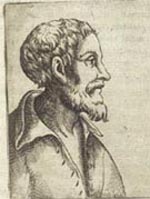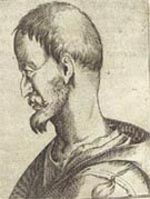
The History of Physiognomy
A Leverhulme Trust International Network
Queen Mary University of London (London), Ecole Normale Supérieure (Paris), and Scuola Normale Superiore (Pisa)

 |
The History of PhysiognomyA Leverhulme Trust International NetworkQueen Mary University of London (London), Ecole Normale Supérieure (Paris), and Scuola Normale Superiore (Pisa) |
 |
|
HomeAbout the NetworkAbout PhysiognomyContactMembersParticipantsEventsBibliographyResources/Links |
Thomas Kirchner (Frankfurt)'The Truth of the Image. Physiognomy and Portrait Painting in French Seventeenth-Century Art' In the France of the seventeenth century there were two approaches to physiognomics. The most prominent one was linked to the Academy of art, founded in 1648. Charles Le Brun, first painter of Louis XIV and head of the institution, proposed in the beginning of the seventies a typology, based on the comparison between men and animals. Even if Le Brun never brought his doctrine to a close, its significance was evident. The aim was to increase the expressiveness of art, especially of history painting. ‘La vérité de l’image. La Physiognomie et l’art du portrait dans l’art du dix-septième siècle en France.’ Dans la France du dix-septième siècle, il y avait deux approches de la physiognomonie. La plus prominente était liée à l’Académie d’art fondée en 1648. Charles Le Brun, le premier peintre de Louis XIV et chef de l’institution, proposa au début des années soixante-dix une typologie centrée sur la comparaison entre les hommes et les animaux. Bien que Le Brun ne conclut jamais sa doctrine, son importance était évidente. Son but principal était d’augmenter l’expressivité dans l’art, particulièrement dans la peinture historique.
|
|||||